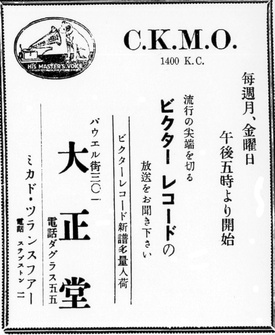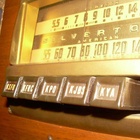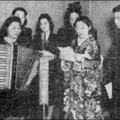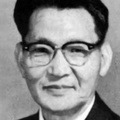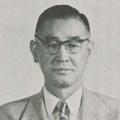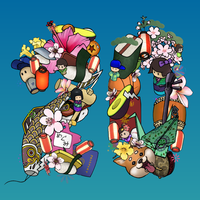The final episode will introduce other Japanese language broadcasts and music programs featuring second generation Japanese speakers.
Taishodo
Taishodo (Kitamura Kenjiro and Kitamura Masaru, from Shiga Prefecture), located at 301 Powell Street, was originally a pharmacy, but expanded its lineup to also sell radios and Japanese records.
On August 19, 1935, the Mainland Nippo newspaper carried an advertisement stating, "CKMO 1400 K.C. Starting at 5:00 p.m. every Monday and Friday. Listen to the latest trends in Victor Records."
A program advertisement published on January 11, 1936, shows that the broadcast time was changed to Saturday at 5:00 p.m. However, after February 18, the last newspaper advertisement for Taishodo no longer mentioned radio broadcasts.
No details are known about this broadcast other than that records will be played.
"Mainland Daily News"
The Japanese language newspaper Tairiku Nippo published its new year issue on New Year's Eve and was traditionally closed on New Year's Day and January 2nd. On January 2nd, 1936, the newspaper decided to broadcast a radio show on CJOR, a station familiar to the Japanese community through programs by Shinkosha and Niimi Shokai. It was initially scheduled to be a 15-minute broadcast starting at 4pm, but it actually lasted 20 minutes, with a New Year's greeting from Tairiku Nippo president Iwasaki Yoriki, the news, and then songs. The show featured "Island Girl" and "Akagi no Komoriuta" by Mary (singing) and Kumano Yoshio (harmonica accompaniment), as well as "Tenryu Shibuki" and "Sendou Kawaiya" by Nakatsu Teruo (singing) and Samukawa Miyoko (piano accompaniment).
From the article "Mary of Bankoba, who has appeared on many of the programs and has been very well received, charmed fans with her cute and beautiful voice accompanied by the wonderful harmonica of Kumano Yoshio" (Continent Daily News, January 3, 1936), we can see that this program was highly praised by Japanese people living abroad. By the way, it is thought that Mary refers to Mary of Rakurakutei.
Japanese United Church
The United Church of Vancouver operated its own radio station (CKFC station). The Japanese United Church also used the station's facilities to broadcast programs featuring Japanese performers. The first broadcast was thought to have been on April 15, 1934, at 4 p.m., with songs by the Japanese United Church Girls Choir.
The second time was as part of the 40th anniversary of the founding of the Banko-pa Japanese United Church, when a bilingual music program was broadcast from 8:30 pm on October 13, 1936. The program included songs by a girls' choir, a talk in Japanese and English by Reverend Kosaburo Shimizu, and a violin solo by Ayako Uchida.
The third broadcast was at 8:30 pm on November 1, 1938. It could be considered a regular broadcast every other year. In addition to a Japanese lecture by Rev. Shimizu, the program featured a song by Fumie Ohori, who had established herself as a singer, a choir performance, and a violin solo.
CKFC was taken out of the management of the United Church in 1940. As a result, radio Sunday School began to be broadcast as a United Church program on CKWX (later changed to CKMO) every Sunday from 4:00 to 4:30 p.m. The program production was open to each immigrant community, and the Japanese United Church also participated.
The Tairiku Nippo newspaper listed two broadcasts in April 1940, one in November, and one in September 1941. The programs included a talk by a Sunday school teacher from the Powell United Church, a solo performance by Setsuko Shimotakahara, and a sermon by Reverend Kosaburo Shimizu.
Nisei Music Program
At the end of April 1938, CKCD began a 15-minute music program featuring second-generation Japanese musicians on Saturdays at 9 p.m. It was broadcast 23 times, every Saturday night, from April 30 to October 1. The performers are listed in order of appearance: Kumagai Katsushi (harmonica), Ushiomoto Fumiko (piano and vocals), Kumano Yoshio (harmonica), Ohori Fumie (vocals), Azuma Nobuko (piano), Nakamura Satoshi (vocals), Niimi Etsuko (piano), Kosaka Fumiko (vocals), Masuda Fumio (violin), Nakano Shizue (piano), Saita Aiko (vocals). The content was mostly classical music, but Japanese songs such as "Hometown," "Kojo no Tsuki," and "Jogashima no Ame" were occasionally featured.
As of September of the same year, Steve Enomoto (violinist) was in charge of overall coordination and promotion of this music program. Due to the positive reception of this program, a meeting was held on May 20th to establish a "music club" made up of Nisei musicians and singers with the goal of promoting friendship between Japan and Canada through music. The leader of this club was Cecil Okawara Kaoru (clarinetist). Enomoto and Okawara were also core members of the Akebono Orchestra of Niimi Shokai Broadcasting.
Japanese musicians appearing on radio
On January 20, 1933, from 5:00 to 5:30 pm, a music program featuring Japanese performers was broadcast on CKWX, sponsored by the New Westminster Chamber of Commerce. Led by Roy Campbell, the program featured a harmonica band, a solo by Ohori Fumie, and a violin solo by Masuda Fumio.
On December 21, 1935, from 8:30 p.m., Vice-Consul Shirakura and singer Usui Fumiko appeared on a CKCD station program to raise Christmas funds.
On December 22, 1936, at 8:30 p.m., a radio auction to raise funds for Santa Claus charity was held on CKCD station, and Reverend Shimizu and Fumie Ohori of the United Church participated on behalf of the Japanese people.
This was a weekly program broadcast by the Vancouver Youth Council on CKMO, featuring Nisei musicians on February 15 and December 7, 1939. The program was sponsored by the Japanese Canadian Citizens League (JCCL) and was written by Edward Ouchi and Yoshio Kumano, respectively.
Many other second-generation Japanese musicians appeared on general music programs alongside local musicians, including Aiko Saita, Fumie Ohori, Fumio Masuda, Tetsu Nakamura, Fumiko Usuimoto, Mitsunobu Kumano, Ayako Uchida, Ritsuko Ide, Nobuko Ishizaki, Katsushi Kumagai, Nobuko Azuma, and Edward Ouchi. Of these, it should be noted that the voices of Fumie Ohori and Ritsuko Ide, whose talents were recognized and who became exclusive singers for CJOR, and Tetsu Nakamura, who appeared on a wide range of programs on CJOR, CKWX, and CKMO, were regularly heard on the radio.
*This article is reprinted from the monthly magazine " Freezer " (May 2022 issue).
© 2022 Tetsuya Hirahara


